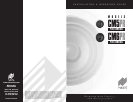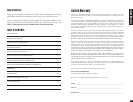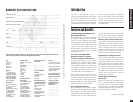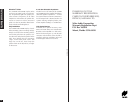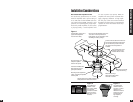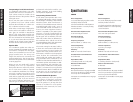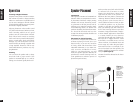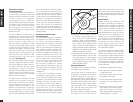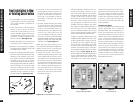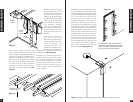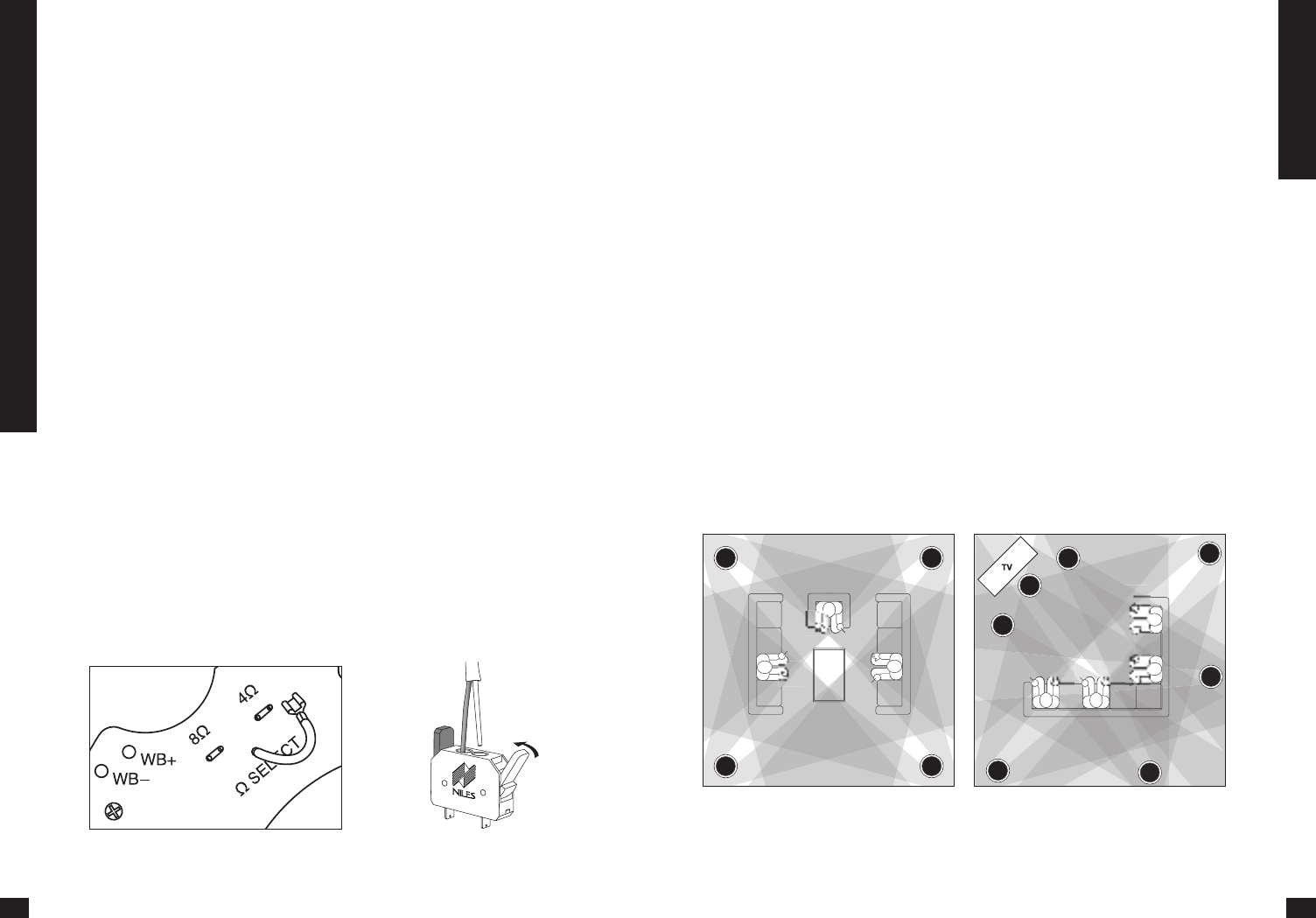
Final Installation in New
or Existing Construction
1. If it is possible to lay a batt of insulation
into the ceiling cavity do so. Remember
to use equal amounts of insulation for
each speaker.
2. Check the position of the Impedance
Jumper on the crossover PC board.
Choose the 4 ohm position if you are
using an amplifier capable of drawing a
4 ohm load and you have only one pair
of speakers connected. Otherwise, use
the 8 ohm position (See Figure 15).
3. Separate the speaker wire so that at least
two inches of each conductor are free.
4. Open the no-strip terminal by applying
pressure to the red and black levers until
an audible “click” is heard.
5. Insert one unstripped wire fully into the
black and one into the red terminal. Pay
attention to the markings on the wire.
Each speaker must be connected to the
amplifier in the same way. If unsure,
see “Speaker Phase” located on the fol-
lowing page. Squeeze the red and black
levers until they click signifying that
they have locked into the wire. Check
to make sure that the knife assembly
inside the no strip connector has prop-
erly pierced the wire (See Figure 16).
6. Insert the no strip terminal into the
corresponding socket on the rear of
the speaker. Push it down until it locks
in place. The terminal will only fit in
the socket in one direction. If the ter-
minal does not properly seat, reverse
the terminal
7. On both models, there are four clamps
or mounting “dogs” which hold each
speaker in place. The dogs are tight-
ened via four front-baffle screws. To
install the speaker, first rotate the dogs
inward. Insert the speaker into the
cutout and tighten the dogs by turning
the screws clockwise. DO NOT OVER-
TIGHTEN THESE SCREWS. Over-tight-
ening the clamps may make the grille
difficult to install. (See Figure 17).
NOTE: The screws will be easier to turn if
you “prime” them first. Before installing each
speaker, turn the screws in and then turn
them back out to their original positions.
8. Direct the Tweeter. The tweeter is
directed by gently pushing on the edge
of the tweeter grille. It will move 20° in
any direction. For critical listening point
the tweeter to the user’s favorite listen-
ing position minimizing reflections from
the side walls. For surround sound or
low volume background listening cre-
ate more reflections and thus more
ambience by directing the tweeter
towards the side walls. See Speaker
Placement on Page 6.
15
Final Installation in New or Existing Construction
Figure 16 No-Strip Speaker Wire Terminal.
Figure 15 Setting the Impedance Jumper.
still more reflections and thus more “sur-
round sound” effect. However, as you
move the speaker farther away from the
listener, both the reflected and the direct
sound will dissipate, requiring more
power from your surround sound amplifier
channels. If the surround sound system
you are using has a small five or ten watt
amplifier for the rear speakers, stay within
five to eight feet of the listening location. If
you are using a 25 to 50 watt amplifier
you can mount the speakers 10 to 15 feet
away from the listening location and still
achieve reasonably high volume levels.
In large or unusually shaped rooms, using
multiple speakers might be the only way to
achieve a good effect. In large or unusual-
ly shaped rooms this might be the only
way to achieve a good effect. If you like
to listen to music surround modes which
emulate concert hall acoustics, more than
two surround speakers will prove extraor-
dinarily effective (See Figure 6). With
Niles CM5PR and CM6PR loudspeakers it
is easy to add another pair without affect-
ing the decor of the room. However, you
will need to use a much more powerful
amplifier than that which is built into a
typical surround sound receiver or ampli-
fier. Niles makes a number of Systems
Integration Amplifiers with proprietary
features that make them uniquely suited
to enhance a good surround sound sys-
tem. Consult your local Niles dealer for
more information.
The Boundary Effect
Corners can affect the bass response of the
speaker powerfully! This is called the
boundary effect. You will emphasize par-
ticular bass frequencies and cancel out
other bass frequencies when you place
speakers close to the wall/ceiling bound-
ary or a corner wall boundary. This can
make the speaker sound excessively
boomy and inaccurate to some listeners,
while to others it just seems like more bass
sound. A good rule of thumb is if you
always listen to your current pair of speak-
ers with the bass turned up, you’ll enjoy
corner placement. If you keep your tone
controls at neutral, try to keep the speak-
ers at least two or three feet from the
boundaries of the room.
8
Speaker Placement
Figure 5
Varying Listening Position
Figure 6
Surround Sound



